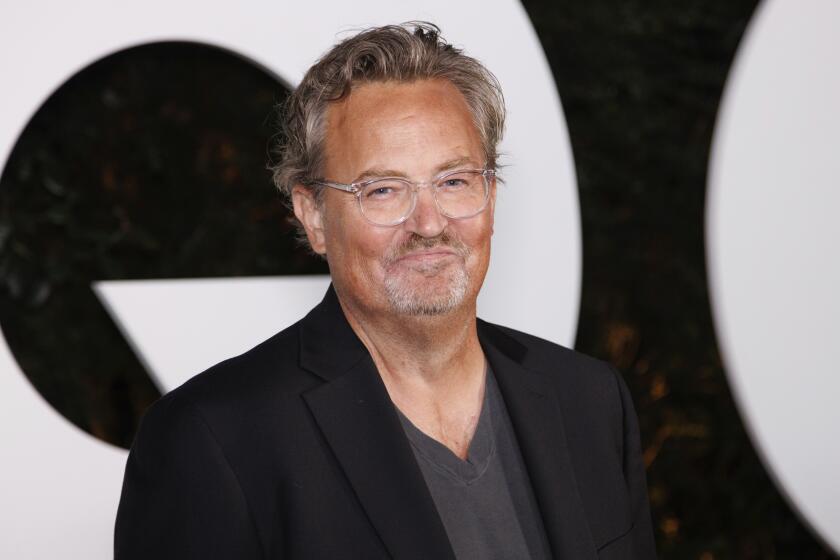Drill Preparation Put Hospitals in Ready State
- Share via
Orange County hospitals say their response to Tuesday’s train collision went smoothly, in part because of preparation for a disaster drill that had been scheduled an hour after the real emergency hit.
“If you had to pick a time to have an accident, this would be the time because the system was all set up to be implemented,” said Dr. Robert Becker, chief of the emergency department at Kaiser Permanente Medical Center in Anaheim, about a mile from the crash site. “If anything, I think I had more doctors than I could handle.”
All told, about 161 victims of the collision were sent to hospitals, and 20 of them initially were deemed to have life-threatening injuries. The 9:15 a.m. drill had been designed to treat about 100.
All 15 of the hospitals in the northern part of the county were scheduled to take part. The exercise was based on a scenario in which a truck carrying toxic material crashed into a Brea storefront less than five miles from the actual crash site.
Hospitals including Kaiser Anaheim had physicians in their surgery, anesthesia and internal medicine departments on hand. Usually, it would take time to assemble such a specialized team. Ambulances and firetrucks heading for the drill were turned around when the train wreck was reported. Amateur radio operators that had been sent to the hospitals for the exercise were put to work in disaster communications.
“All the agencies were there [at the drill site], police, fire, about 30 ambulances,” said Lisa Larres, a disaster preparedness specialist for the American Red Cross, adding that 350 people were scheduled to participate. “We were waiting to get started. One of the fire chiefs came over and said, ‘There’s a real incident going on at this time. The drill is canceled.’ I just thought ‘Oh no.’ ”
Though injuries were numerous, officials at several hospitals said they were equipped to handle accidents of this magnitude and had a far easier time than if bioterrorism had been involved or a serious earthquake had hit.
At St. Jude Medical Center in Fullerton, clinical educator Vicki Cadwell was in the middle of final drill preparations with nurses when news of the crash arrived. The hospital had 20 emergency room nurses on hand at one point, compared to the usual morning crew of nine.
Initially, some hospitals reported confusion among staff members as to what was real and what was not. Despite having a message piped through the public address system that the train collision was not a drill, “There were still people questioning: Are they just saying that?” Cadwell said.
At Anaheim Memorial Medical Center, the overhead paging system had back-to-back announcements about the need for supplies for both the mock and real disasters.
“Within a very short period of time, we suspended the drill,” said Dr. Tim Korber, the hospital’s director of emergency services.
When word of the real disaster spread, off-duty nurses and doctors began arriving and calling to see if their help was needed.
Anaheim General Hospital officials said the drill had caused them to update phone lists and map out assignments well in advance.
Had the real disaster happened any other time, “we wouldn’t have been as prepared,” said hospital spokeswoman Sandy Scheppmann.
Hospitals said they could have handled even more patients. St. Jude moved two of its community medical vans to its ER parking lot to treat the least seriously injured so that its emergency room could stay clear for more critical cases.
Anaheim Memorial, which received more than 60 patients, set up a tent in its parking lot to treat the “walking wounded.” As soon as beds became available inside, patients were moved. Only three people were admitted throughout the day.
The American Red Cross’ Southern California division said it shipped extra units of blood to the hospitals, depleting its supply of O-negative and A-negative types to less than a day’s reserve. The group tries to keep a supply of three or four days on hand.
For the first time since Sept. 11, the group put out a call for blood donors. To arrange to give blood in Orange and Los Angeles counties, people can call 800 GIVE-LIFE.
Dr. Bruce E. Haynes, medical director of Emergency Medical Services for Orange County, said the system worked well but officials will review the response to see if they could have done anything better.
More to Read
Sign up for Essential California
The most important California stories and recommendations in your inbox every morning.
You may occasionally receive promotional content from the Los Angeles Times.













